Listen to This Blog On The Go:
If you’re in the SaaS space, you know how critical it is to have a killer homepage and pricing page. But what if I told you that your Product page might be just as crucial, if not more so?
Often referred to as the feature page, the product page is where potential customers dig into what your product is really about. It’s where they decide if your solution can solve their problems.
Yet, far too many SaaS companies overlook the importance of these pages, missing out on huge opportunities for optimization.
Why is this a big deal?
In today’s crowded SaaS market, where even niche products face stiff competition, your product pages are often the decisive factor in your target customer’s journey.
SaaS product pages are meant to capture attention, answer questions, and build trust quickly with explanatory content. If your SaaS product page lacks the vital attributes then you’re likely losing a significant amount of potential customers before they ever sign up.
So, how do you ensure your product page hits all the right notes? Here are the top 5 saas product page optimisation best practice for you to follow and implement:
The hero section is the first thing your visitors see, and it’s got to be spot on. This is where you make your first impression—so make it count.
Your headline should be crystal clear, telling visitors exactly what your product does. Pair it with a strong subheadline that speaks directly to their pain points. Add a compelling CTA, include the most compelling features/value points and an engaging visual to tie it all together.
Users form an opinion about your site in a split second. A well-crafted hero section grabs attention right away, making visitors more likely to stick around and learn more.
According to ConversionXL, a strong value proposition in your hero section can boost conversions by up to 20%.
Here is an example from a sales engagement software Smartlead.ai. In their product/feature page “unlimited email warmup”, they have well implemented the hero section best practices giving the first time users a clear understanding of what the product is about and how it solves a pain point of cold emails landing in spam boxes.
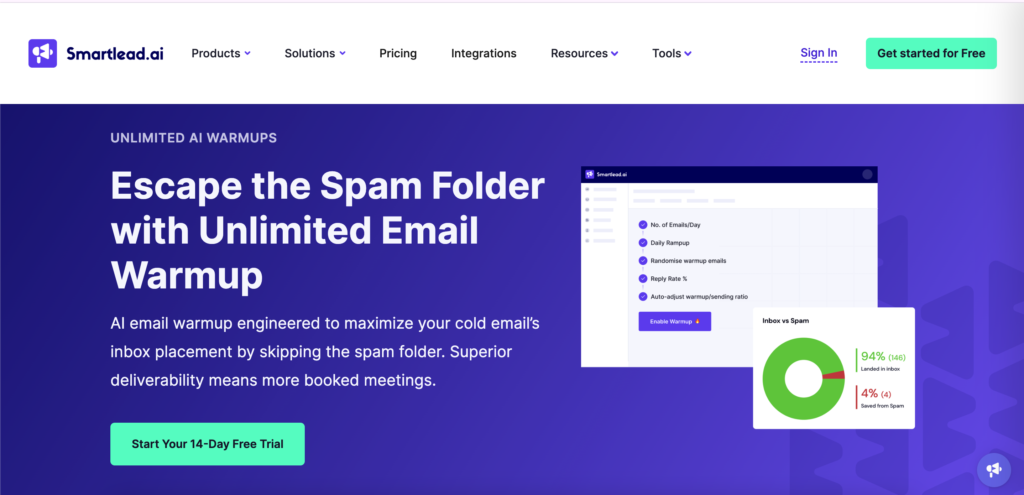
Testimonials from happy customers can go a long way in building trust and relevancy factor for your product.
It’s very natural that users feel more confident when they see others praising your product especially when they address specific pain points your product solves. This type of earned media/content is your product’s super power and you have to flaunt it in the best way possible.
Along with client testimonials, case studies are an equally powerful weapon in your arsenal —use them to showcase real-world success stories and demonstrate how your product has delivered measurable results for your customers.
These elements turn potential doubts into firm decisions, helping to convert visitors into loyal customers.
92% of consumers trust recommendations from others, even if they don’t know them personally. Social proof uses this trust, making it easier for potential customers to take the leap.
Take a look at this example from Lemist – another sales engagement software.They have creatively displayed their client testimonials within their “b2b lead database” feature page.
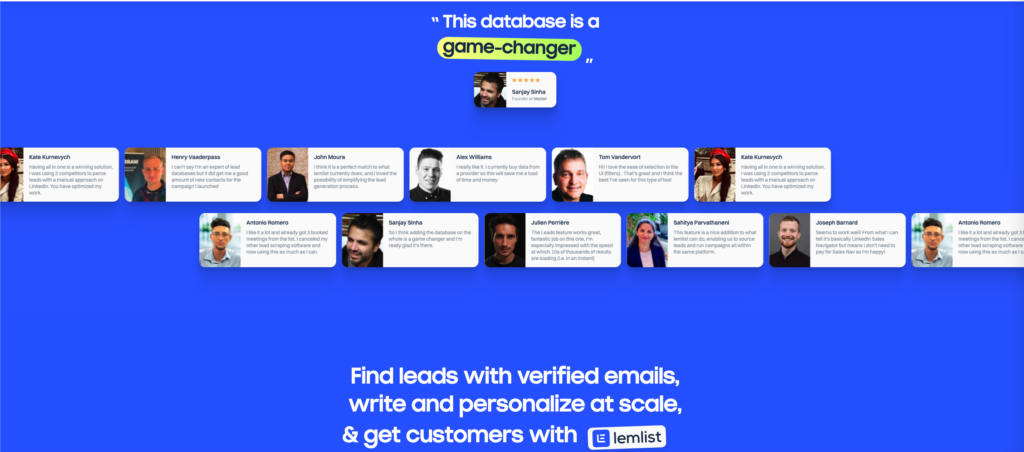
All the great content in the world won’t help if nobody sees it. And that is exactly where SEO comes in.
Optimizing your product page for search engines can drive organic traffic and ensure your page gets in front of the right eyes.
Focus on title tags, meta descriptions, and keyword usage. Focusing on just the high volume broad searched keywords won’t do the job, and you will be lost in SERPs.
If your product serves a niche audience you have to target intent based keywords that your niche audience is actually searching for. Upon research you will find most of these keywords are low hanging, long tail and mostly low volume keywords.
Apart from niche based keyword research, make sure your page is mobile-friendly and fast-loading—Google’s algorithms will thank you for it.
75% of users never scroll past the first page of search results. Therefore the only thing that can get your website rank higher for relevant search terms is SEO. With SEO, you build organic traffic which gives you better leads and sustainable traffic.
Let’s see an example from Snov.io. In their feature page for “email warmup” they have meticulously used the target keyword and its variations.
They have optimized their page title and meta with the keywords helping them rank among the first 5 results for the search term “email warmup”.
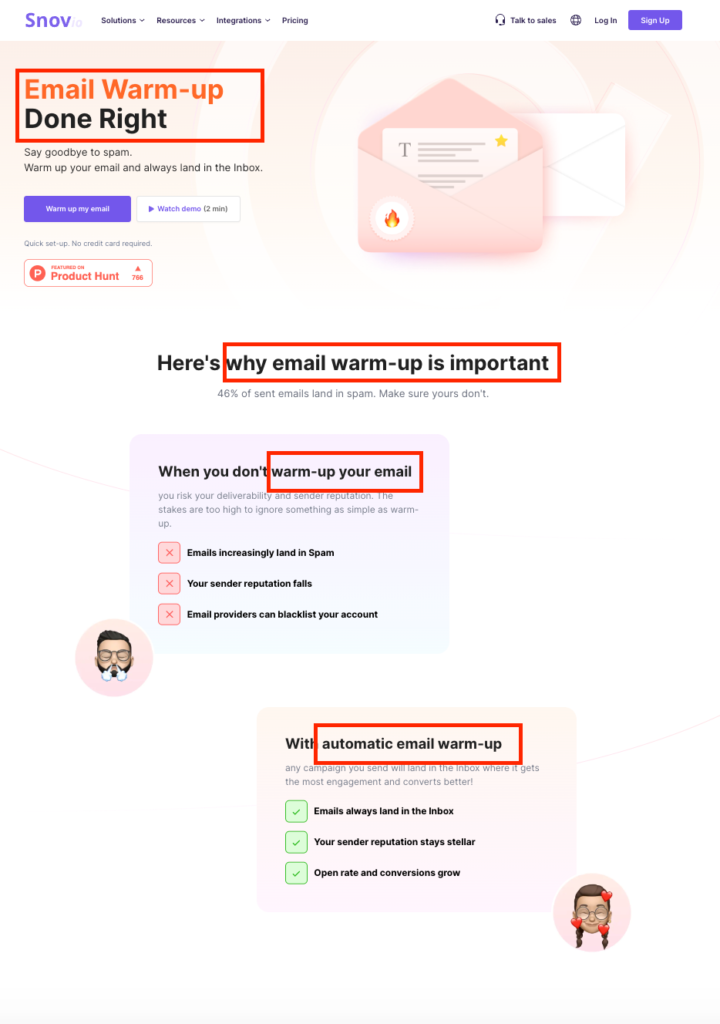

Humans are visual creatures, and your product page should reflect that.
High-quality images, infographics, and videos aren’t just nice to have—they’re essential. Visual content helps break down complex features and makes your product easier to understand. An animated demo, for example, can walk users through your product’s benefits in a way that text alone can’t.
People remember 80% of what they see, compared to just 20% of what they read. With captivating visual content, you make your product more memorable and engaging, increasing the likelihood of conversion with a better understanding of the product.
For example, Notion makes excellent use of visual content on their product pages.
They incorporate videos, animated demos, and screenshots that walk users through the different features of their product. This visual storytelling makes it easy for potential customers to grasp the benefits and functionality of Notion products quickly.
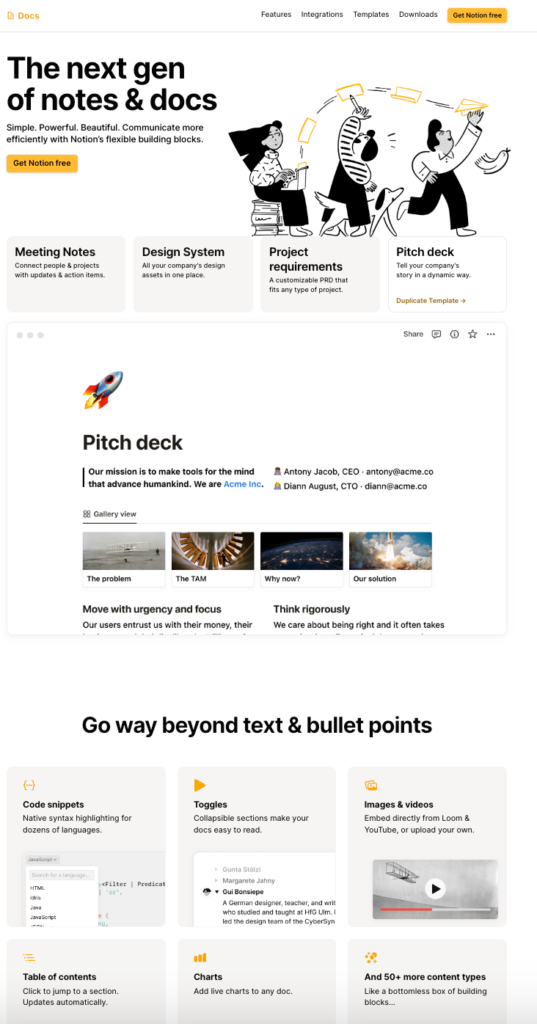
An FAQ section might not seem glamorous, but it’s incredibly effective.
This is where you address common concerns and questions, making it easier for potential customers to understand better about the product, its applicability, etc. Cover everything from pricing to product functionality to support options. The more thorough your FAQ, the fewer barriers to conversion.
According to Forrester, 53% of customers will abandon a purchase if they can’t find quick answers to their questions. An FAQ section can be the difference between a lost lead and a new customer. Moreover, FAQ sections are a great way to target long tail – question based keywords within your product page.
For example, Smartlead.ai makes the best use of the FAQ section in each of their product pages. In the feature page “premium email deliverability at scale”, they have answered numerous questions that their customers might have regarding the feature or product.
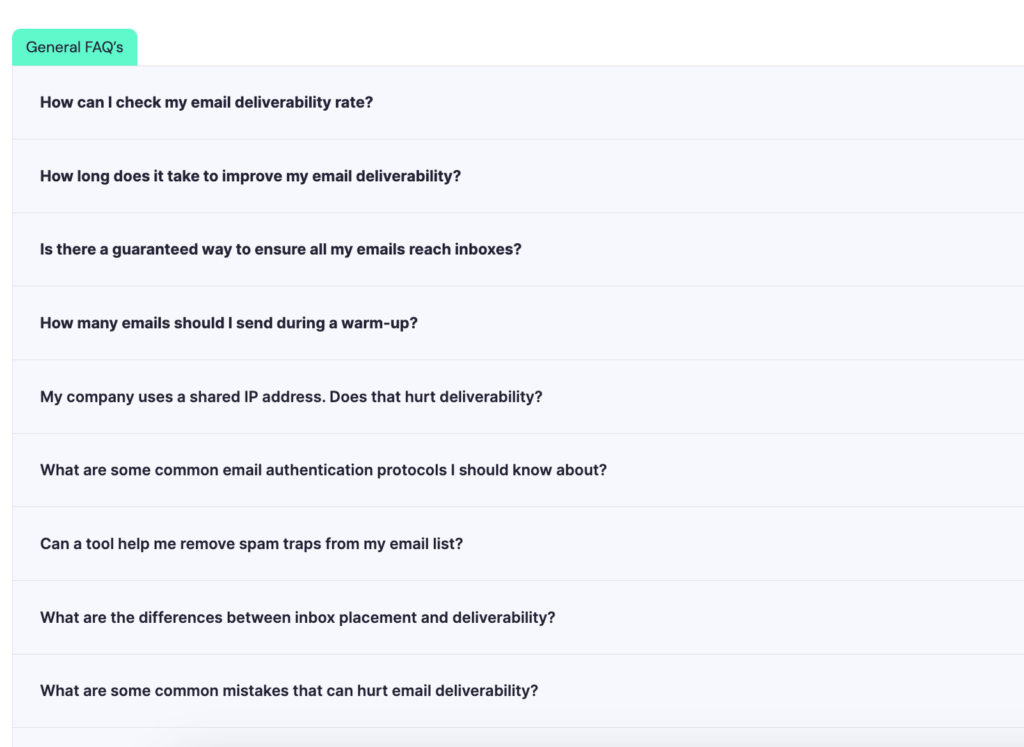
Every SaaS company face unique marketing challenges within their own niche. As niche markets are also getting highly competative day by day “capturing” and “converting” leads is now more challenging than ever.
Optimizing your SaaS product page isn’t just about making it look good—it’s about making it relevant, relatable and valuable to your target customers. The above mentioned 5 saas product page optimisation best practices are a great way to start seeing increase in your form submissions and CTA engagements.
We at digital seo land understand that every SaaS product is unique that addresses a unique pain point.
With solid strategies and years of expertise in hand, we’ve helped numerous SaaS companies achieve measurable results that directly impact their revenue.
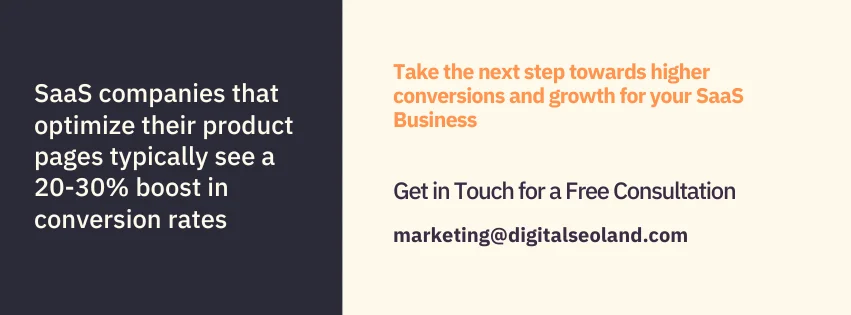
Googlebot is like a traveler with a limited number of stamps in its passport. Each time it visits...
Read Case Study(A practical, human guide for stakeholders who want results) Enterprise SEO remains a top growth channel in 2025,...
Read Case StudyYour search for how to find blog post topic ideas in 2025 ends here! Finding interesting blog topics...
Read Case Study